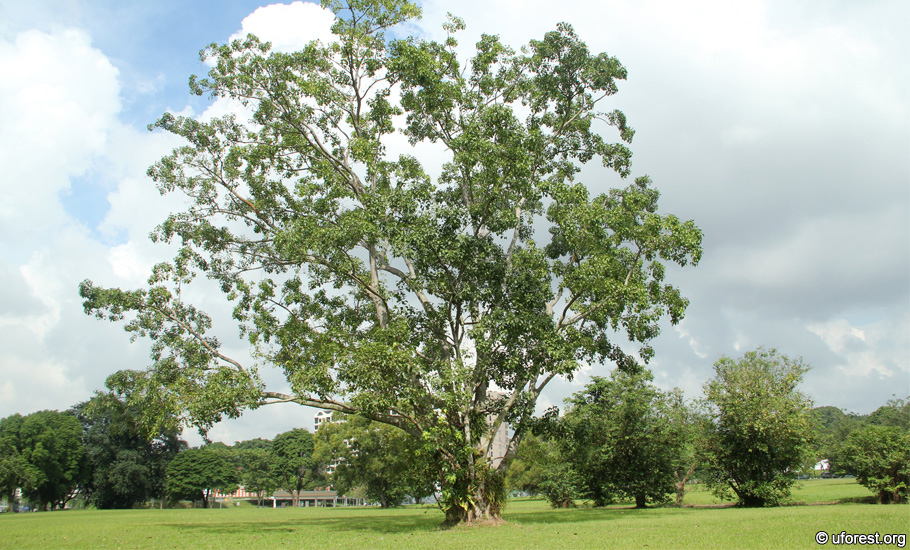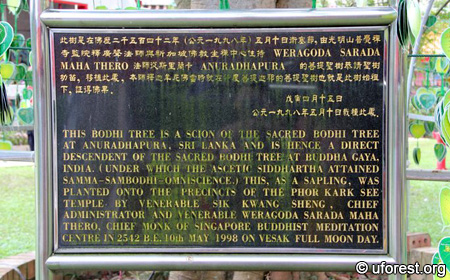Ficus religiosa L.
| Etymology | Genus | From the Latin name for the fig (Ficus species) |
|---|---|---|
| Species | Sacred; this is a plant revered by Buddhists | |
| Family | Moraceae | |
| Synonyms | Ficus superstitiosa Link | |
| Common Names | Bodhi Tree, Sacred Fig, Peepul Tree | |
| Status | Exotic: Naturalised | |
| Form | Tree or Strangler | |
| Native Distribution | India | |
Diagnostics:
The leaf of the Bodhi Tree is unmistakeable. It is heart-shaped, has clear light-coloured veins, and a very long drip tip.
Interesting Facts:
Ficus religiosa can exist as a variety of growth forms; a lone tree by itself; an epiphyte on another tree which will eventually grow its aerial roots and strangle its host (hence the name strangler fig for such Ficus species); or a small woody shrub growing out from concrete cracks from the ground or buildings.
The Bodhi Tree is revered by Buddhists and Hindus (Tan & Giam, 2008). This is the tree where Siddharta Gautama, the Buddha sat under when he gained enlightment in Bodhgaya, India. A cutting from this particular tree was planted in Anuradhapura, a city in Sri Lanka. The one in our Kong Meng San Monastery (the largest Buddhist temple in Singapore) is thus a third generation clone from the original tree (see picture below).
The Bodhi Tree is also associated with many Hindu deities (Tan & Giam, 2008). It is regarded as a symbol of the male, while Azadirachta indica, another tree that can be found locally, represents the female.

Form of a Bodhi tree in Bidadari Cemetery.

It is a common sight to find it growing out of concrete cracks.

Leaves are very distinct: long drip tip, heart-shaped, whitish veins.

Ripening figs that will eventually turn purple.

Sign under the Bodhi Tree planted in Kong Meng San Monastery.
References
Tan HTTW & XL Giam. (2008) Plant Magic: Auspicious and Inauspicious Plants from Around the World. Marshall Cavendish, Singapore. 215 pp.Author: Siyang
Posted: 2013-02-06 / Modified: 2017-12-25